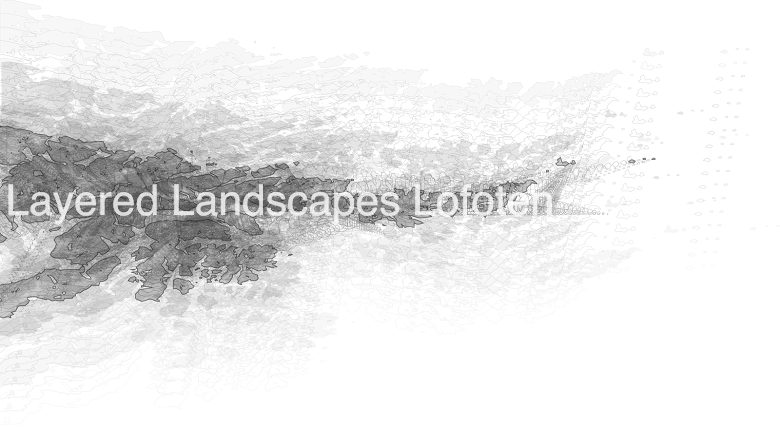Keywords: resilience / adaptation
Literature: ‘Ecology and Flexibility in Urban Civilization’, Gregory Bateson, from
Steps to an Ecology of Mind (1972)
Lecturer: Kjerstin Uhre (architect, phd research fellow)
Now more than ever, nature cannot be separated from culture; in order to comprehend the interactions between ecosystems, the mechanosphere and the social and individual Universes of reference, we must learn to think ‘transversally’. Félix Guattari, The Three Ecologies (1989)
In Paris the office aaa (atelier d’architecture autogerée) lead by Constantin Petcou and Doina Petrescu, has developed an urban flexibility strategy (or tactics which are events and interventions to engage citizens in defining their own living conditions and position as participants in the urban context) on the concept of resilience. They use resilience as a proactive tool to prepare for the ongoing changes in the urban fabric, and for securing the inhabitants’ rights to emancipation, and to participation in urban life.
‘Resilience’ is a key term in the context of the current economic crisis and lack of resources. In contrast to sustainability, which is focused on maintaining the status quo of a system by controlling the balance between its inputs and outputs, without necessarily addressing the factors of change and disequilibrium, resilience addresses how systems can adapt and thrive in changing circumstances. Resilience is a dynamic concept with no stable definition or identity outside the circumstances producing it. In contrast to sustainability, which tends to focus on maintaining an environmental balance, resilience is adaptive and transformative, inducing change that harbours vast potentials for rethinking assumptions and building new systems. (Petrescu & Petcou 2015, p. 255)
The earthly conditions for life are in continuous change and even the seemingly most conceivable harmonious and balanced systems and structures undergo a constant inner and outer battle and fight for survival. The most specialized species and societies are the most vulnerable for external influence and environmental changes, and in times of rapid and strong changes, ability for adaptation and flexibility is crucial. This counts for ecosystems in nature, cities or societies – something that was manifested through numerous examples during our recent study trip to Lofoten; the consequences of places’ and societies’ ability for flexibility and adaptation. Some communities have disappeared, some have been able to adapt and to profit from structural changes, and some have frozen in time, and turned into museal remainings of another life, time and function.
Gregory Bateson describes the failure of adaptation as a lack of flexibility and understanding of the transforming forces, dedication of new knowledge and development of new means for production and invention; The new invention gives elbow room or flexibility, but the using up for that flexibility is death (Bateson 1972/2000, p. 503).
Like Félix Guattari, Gregory Bateson is very aware of the dynamism of the changes and the importance of contextual ecological understanding in planning – with the consequence that [w]e are not outside the ecology for which we plan – we are inevitably a part of it (IBID, p. 512). It is a challenge for existing planning regimes to handle the complexity that comes out of a deep ecological thinking, and of keeping the planning process open for heterogeneity and adaptable to the future unforeseen. According to Bateson it is an absolute necessity to maintain complexity in nature and diversity in the civilization, not only to accommodate the genetic and experimental diversity of persons, but also to provide the flexibility and ‘pre-adaptation’ necessary for unpredictable change (IBID, p. 503).
The basic condition for planning and change lies in the transversality between natural and cultural ecosystems described by Guattari, and must be largely understood for building up resilience in the landscape, not in resisting change, but in terms of accommodating change (Allen & Sauters, 2007). Stan Allen and Florian Sauters discuss this as the necessary way of planning which means that your thinking has to be every bit as fluent and adaptive as the kind of systems you are talking about. In other words, you can not apply rigid or dogmatic principals to systems that are themselves fluent, adaptable, changing and always incorporating feedback. (…) It is a way of thinking that mirrors the dynamism of ecological systems themselves (IBID). This is a philosophy that presupposes an acceptance of – and ability to, address the complexity inherent in nature and society, and emphasize that for us to survive; the ecological ideas implicit in our plans are more important than the plans themselves (Bateson, 1972, p. 513).
Stan Allen in dialog with Florian Sauters, ‘Theory, practice and landscape in Natural metaphor’, architectural papers III, 2007
Gregory Bateson, Ecology and Flexibility in Urban Civilization, in Steps to an Ecology of Mind (1972)
Constantin Petcou and Doina Petrescu, R-URBAN or how to co-produce a resilient city, in ephemera, 2015)
Félix Guattari, The Three Ecologies 1989































